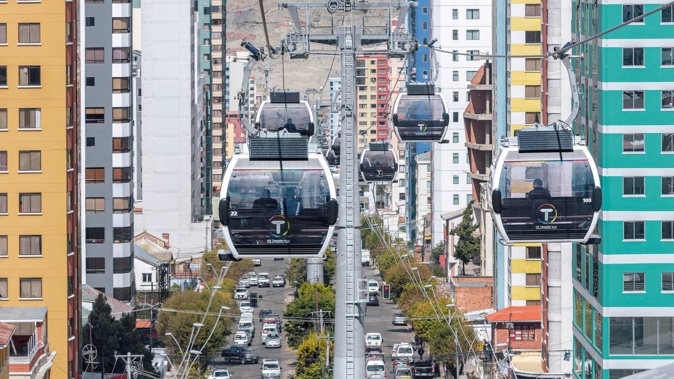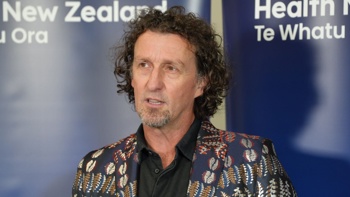
A gondola line is unlikely to be a viable option for getting pedestrians and cyclists across the Waitematā Harbour, transport advocates say.
A $200 million, 4.2km gondola system has been proposed by Austrian firm Doppelmayr, linking Wynyard Quarter, Bayswater and Akoranga bus station.
The firm's Christchurch subsidiary said the "ropeways" could be built within two to three years, transport 6000 people a day across a 20-hour period, and could possibly be used by cyclists.
Auckland Mayor Phil Goff said he had been briefed on the idea by Doppelmayr's New Zealand representatives but had not received any formal advice on its viability.
He welcomed any ideas which helped to "accelerate mode shift" but said any project seeking public investment needed to be based on a robust business case showing any funding would deliver net benefits.
Goff suggested to Doppelmayr that it develop a specific proposal in which the company designed, constructed and operated the gondola. That meant no public money would be used and the company would carry any risk.
"That would allow Doppelmayr to test the concept and demonstrate its feasibility and viability for wider application should it be successful," a spokesman said.
The gondola proposal comes after the Government scrapped plans for a , dedicated walking and cycling bridge which had a projected cost of $785 million.
Auckland Transport/Waka Kotahi NZ Transport Agency was now working on new options for a harbour crossing for pedestrians and cyclists, which could include dedicated ferries or buses.
Matt Lowrie, editor of Greater Auckland, said gondolas would have some advantages over dedicated ferries. They could potentially have greater capacity and commuters who missed a ride would not have to wait a long period for another.
Lowrie said gondola lines had been valuable in hilly cities, and noted that one was planned in Vancouver linking a train station and a university campus at the top of a hill.
But he felt that gondolas were a "distraction" from more realistic proposals for harbour crossings.
"We see these sorts of ideas popping up all the time in transport, and almost none come to fruition because they are trying to force a solution into the technology they are trying to sell."
He said gondolas would not have the capacity required for a crossing, and could involve multiple transfers for commuters.
The gondola proposal would include two to three pylons between each station. Constructing these in the harbour would have "huge consenting risk" which could lead to a cost blowout, Lowrie said.
His preference was for a dedicated public transport crossing with capacity for buses, cycling and walking. If that was not possible, Lowrie said lanes should be freed up on the harbour bridge for public transport, walking and cycling.
Bike Auckland chairman Tony Mitchell said the gondola proposal was "intriguing" and "worthy of consideration" by Waka Kotahi as an option for a harbour crossing.
"My initial thought was that they were a bit pricey at $200 million. But it did offer some additional character, zero carbon footprint and plenty of capacity to ship people across."
But he had a lot of unanswered questions about its practicality.
"You don't have 24-hour access – you have 20-hour access but there are still people who want to get across at various times due to shift work.
"We've got concerns about people getting on and off with their bikes, at high-capacity times that might be a challenge."
Mitchell also had concerns about safety, especially late at night, when groups of people would be in a small, unstaffed space with strangers for a long period.
His preference was for a dedicated lane on the harbour bridge for walking, cycling and "micro-mobility" (scooters).
Mitchell also questioned the timing of the firm's publicity for its idea. It comes as Waka Kotahi finalises new options for a harbour crossing.
"If they were still in the running and a serious contender, why would they be making a media release?"
Take your Radio, Podcasts and Music with you









